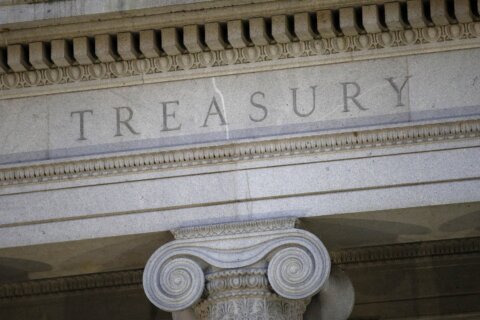Even as stocks make a comeback in November — the S&P 500 is up 18.2% year to date and 7.4% over the past month as of Nov. 21 — investors are wary of heightened risk and are investing accordingly.
As 2023 draws to a close, that means retirees or workers nearing retirement should consider curbing risk by steering cash into less volatile assets until the smoke clears, the economy ramps up and stocks are stable again.
[Sign up for stock news with our Invested newsletter.]
“Despite many financial advisors believing that there is a potential for a ‘soft landing’ or the ultimate avoidance of a recessionary economy, I am not that optimistic,” says Christopher M. Naghibi, chief operating officer at First Foundation Bank in Orange County, California.
Naghibi believes that investors will still experience a market correction, but not a technical “crash,” in both the stock and real estate markets.
“Combine this underlying fear heading into an election year, geopolitical uncertainty and data that is flashing warning signs, trouble could lie ahead,” he says. “We are still in an inverted yield curve, for example, and that typically precedes recessionary economies. Plus, unemployment typically peaks after the declared end of a recession, and we are at the highest non-household debt in history.”
To Naghibi, this all signals that cash is king for the foreseeable future.
“We should all aim to hold more cash or low-risk cash equivalents until we feel the markets have begun to stabilize,” he says. “Being smart with your cash position will allow you to invest in growth opportunities in the future, and you’ll need to evaluate those quarterly until we get through this particularly puzzling economic period.”
What low-risk investments should you be mulling over as 2023 nears an end? Investment experts have a few ideas in that regard:
— Treasury, municipal and corporate bonds.
— Bank certificates of deposit.
— Dividend stocks.
— Money market funds.
— Long-term investments.
— De-risking investments.
[See: 10 of the Best Stocks to Buy This Year.]
Treasury, Municipal and Corporate Bonds
With money market funds yielding north of 5%, cash undoubtedly has a place in the ballast portion of long-term investors’ portfolios. That said, some financial experts say the current opportunity in the traditional fixed-income market is too compelling to ignore.
“This includes Treasurys, municipal bonds and investment-grade corporate debt,” says Daniel Dusina, director of investments at Blue Chip Partners in Farmington Hills, Michigan. “Income distribution across the bond market remains robust and, with the prospect of a Federal Reserve interest rate pause now here, bonds pose potential for price appreciation as well.”
Timing comes into play with bonds right now. “The average forward returns for domestic bonds, represented by the Bloomberg US Aggregate Bond Index, have historically shown that the opportune time to allocate to the bond market is after the Federal Reserve pauses, not waiting until the central bank explicitly moves to cut interest rates,” Dusina notes.
While certificates of deposit and money market funds offer competitive rates and deserve a look right now, especially in the short term, bonds can pay off more handily over the long haul for flexible investors.
“High-quality bonds across the government, municipal and corporate debt landscapes hold the same value proposition from an interest rate perspective as money market funds, but they provide the added benefits of maintaining the current level of income distribution and healthier prospects for price return in addition to healthy income distribution,” Dusina adds.
Bank Certificates of Deposit
Bank CDs are proving to be popular in late 2023, as savings rates rise and as long-term investors seek shelter from what they perceive to be high risk in stocks. In fact, CD rates of over 5% are commonplace at banks and other financial institutions these days.
Capital One, for example, is offering a 5% annual percentage rate (APY) for a one-year CD with no minimum deposit. Synchrony Bank goes even further, with a 5.5% APY on its nine-month CD with no minimum. As with any investment, talking with a trusted money manager can help you select the CD that works best for your unique investment needs.
Say you’re within 10 years of retirement, for example, and trying to decide how much to keep in bank CDs. “In that scenario, I recommend having 18 to 24 months of ready cash in either high-yield savings or CDs as a starting point,” says Bradley Thompson, a financial planner with New Canaan Group in New York. “This can help ride out a life event or market drop at the wrong time. Beyond that, it’s tailored to the individual client and may be quite high or quite low depending on their overall risk tolerance.”
Dividend Stocks
If cash really is king in a period of high inflation and robust interest rates, dividend stocks should be front and center in a retirement investor’s mind, as the best ones produce dividend income on a regular basis. That’s an ideal scenario for someone living on a fixed income.
Bank of America Corp. (ticker: BAC), for instance, is trading at a relatively cheap $30 per share, which also gets you a hefty 3.2% dividend payout. Another finance giant, Discover Financial Services (DFS), also offers a 3.2% dividend right now.
Getting dividend payouts isn’t the only portfolio advantage in volatile markets. Historically, companies that deliver regular dividend payments also tend to make money, which helps with stock appreciation.
“An increasing dividend usually signals resilience and the company having confidence in their ability to execute on their strategy in spite of ever-changing market conditions,” says Dolores Bamford, a senior portfolio manager at Eventide Asset Management in Concord, Massachusetts.
Money Market Funds
Like CDs, money market funds can offer 4% or even 5% returns virtually risk-free, making these high-end bank savings accounts an optimal low-risk investment these days. “This high-interest-rate environment allows investors to earn high interest on low-risk assets like money market funds,” says Shinobu Hindert, a San Diego, California-based certified financial planner and author of the book “Investing Is Your Superpower.”
That’s especially the case if you need to access your money within the next few years. “Good low-risk investment options should (include) money market funds,” Hindert says. “Money market funds, like Fidelity Government Money Market Fund, SPAXX, are paying about 5%. That’s a great low-risk investment option that shields you from market volatility.”
[READ: 10 Best Growth Stocks to Buy]
Long-Term Investments
It’s also a good idea to hold cash right now and track local markets for real estate investment opportunities or track your favorite long-term stock values.
“As we experience an earnings recession and consumer discretionary spending pulls back, there will be buying opportunities in both markets,” Naghibi says. “If you’ve been holding cash, you’re going to be well situated to take advantage. Remember, the Fed has said they are going to hold rates ‘higher for longer,’ so don’t expect things to change overnight. Slow and steady will win the race here.”
Aim for 60% in stocks and 40% in low-risk investments like bonds and CDs when thinking long term with your portfolio as you save for retirement, experts say. “The only real hedge against inflation is to keep investing,” Naghibi says. “Additionally, don’t change your portfolio allocation split drastically right now. Just reallocate your dividends and maturing liquidity into cash (or cash equivalents) with a higher yield until you’re ready to better time the market.”
If you have recurring investments or a mature portfolio, don’t sell or reposition. “Have faith in a long-term investment vision,” he adds. “Any correction in values will only be a near-term pivot over the course of 10 years.”
De-risking Investments
If you’re currently saving for retirement and drawing closer to your last day of work, use this time to start thinking about “de-risking” your investment portfolio.
“Basically, de-risking just means moving some assets from stocks into bonds,” says Robert Johnson, professor of the Heider College of Business at Creighton University. “Doing so allows you to begin to reduce risk exposure in your retirement accounts at a time when stocks aren’t doing all that well relative to bull market periods.”
There’s a good reason for de-risking right now, as a large downturn in the market immediately preceding retirement can have devastating effects on an individual’s standard of living in retirement.
“The exact time a person retires can have an enormous impact on the quality of their retirement if their assets are focused in the equity markets,” Johnson says. “Take, for example, someone who retired at the end of 2008. If they were invested in the S&P 500, they would have seen their assets fall by 37% in one year.”
The five to 10 years prior to retirement can be considered the retirement red zone, and older investors nearing their golden years can’t afford a big downturn then, Johnson says. “This is what is referred to as a sequence of returns risk,” he says. “A bad sequence of returns immediately preceding retirement can be devastating.”
Once in retirement, retirees should continue to de-risk, but don’t take this de-risking to extremes, especially as the stock market bounces back, as it invariably does.
“Many investors fail to recognize that their time frame is much longer than they may believe,” Johnson says. “If one retires at 65, one may have a lifespan of an additional 30 years. Holding too conservative a portfolio can lead people to run the risk of outliving their assets.”
More from U.S. News
8 of the Best Low-Risk Investments in 2023
7 Bank Stocks to Buy for the Dividends
7 Best Sports Betting Stocks to Buy
6 Low-Risk Investments With High Returns for Retirees originally appeared on usnews.com
Update 11/22/23: This story was previously published at an earlier date and has been updated with new information.







